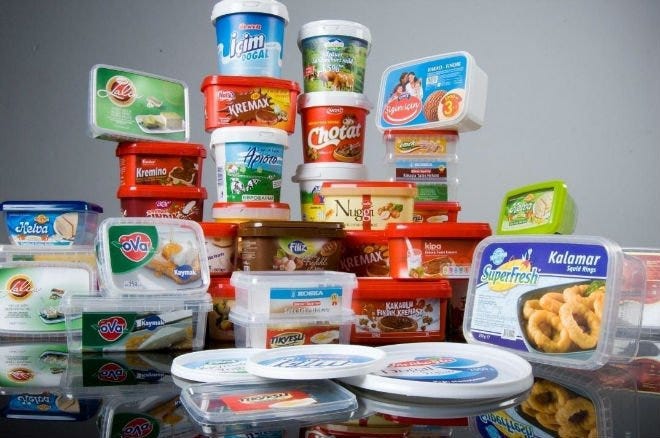Walk into any grocery or retail store and you'll see the shelves lined with packaging that utilizes the in-mold labeling (IML) process. IML has become an important component of many companies' branding and sustainability strategies. Despite the progress in IML applications, technology and materials, it remains a niche in the overall label market globally. That was the message of Corey Reardon, president & CEO of AWA Alexander Watson Associates, in his address to attendees at the annual IMLCON/IMDCON in Phoenix last week.
February 27, 2014

Walk into any grocery or retail store and you'll see the shelves lined with packaging that utilizes the in-mold labeling (IML) process. IML has become an important component of many companies' branding and sustainability strategies. Despite the progress in IML applications, technology and materials, it remains a niche in the overall label market globally. That was the message of Corey Reardon, president & CEO of AWA Alexander Watson Associates, in his address to attendees at the annual IMLCON/IMDCON in Phoenix last week.
The three common forms of containers/packaging that utilize IML are extrusion blow molded (IML-EB)  containers/bottles, injection molded (IML-IM) and thermoformed (IML-TF) packaging. Globally, IML-IM is the largest label format with 68 percent of the IML market, with Europe using the lion's share of that at 98 percent. This format is favored for use with thin-walled PS or PP containers.
containers/bottles, injection molded (IML-IM) and thermoformed (IML-TF) packaging. Globally, IML-IM is the largest label format with 68 percent of the IML market, with Europe using the lion's share of that at 98 percent. This format is favored for use with thin-walled PS or PP containers.
IML-EB is the primary format for IML globally with a 31 percent market share, and enjoys high volumes in North America at 68 percent. IML-EB is favored for thicker-walled blow molded bottles made from materials such as HDPE and PP. IML-TF is only just emerging as a popular format over the last decade, and is growing at a slow rate, facing serious competition from IML-IM and other formats.
Global demand for labels generally shows that Glue Applied (GA) and Pressure Sensitive (PS) are still the market share leaders, with 38 percent each. Shrink sleeve labels are becoming a strong contender at a 17 percent demand rate, with strong growth rates in all regions eroding market shares and growth potential of GA and PS. "Glue applied label volumes are growing in developing markets, however, that format is declining or hardly growing in developed markets," Reardon said. "The real growth is in shrink sleeve and labels, which have the fastest growth potential overall."
IML continues to lag behind these at just 2 percent of the total demand for labels, with other formats representing 5 percent of demand.
The supply chain for IML remains complex and lengthy. It includes polymers, containers and bottles, film producers, label printers, commercial web coaters, moldmaking, molders (converters), contract fillers, end users/brand owners, retailers and ultimately consumers, all of which have a stake in the success of IML. Because of the number of players and the extensive collaboration that has to take place, the adoption process of IML is much slower.
Obviously one of the challenges to mainstreaming IML is integrating all of the components of the system. Reardon pointed out that the IML market is unique: unique applications and unique solutions. "No two applications are alike," he said.
pointed out that the IML market is unique: unique applications and unique solutions. "No two applications are alike," he said.
In a panel discussion that included the five presenters of the IML workshop, Matt Membrino, regional sales manager for Netstal, commented, "We need a better understanding that all parts of the system have to be right. One poorly performing part of the system means the whole system goes downhill. It needs everybody working in concert together."
Membrino added that he's often asked about "flexible systems" to help improve the ROI on an IML system. However, from the molding machine and automation standpoint, this is problematic. "The more flexible the system, the less efficient it is," he said. "It's a lot of automation and mold design work. The automation suppliers are asked about flexible systems as well, but until the market comes around and sees that we need these [customized] systems to reduce risk and help IML grow."
Tricia Sime, director of R&D for Inland Label, noted that building successful IML platforms won't happen by accident. "If we make IML successful, we need to be successful together."
Advancements and developments in IML means that the format is attracting attention. Some of those developments include:
Improved labeling speeds (thanks to molding machinery, mold and automation advancements)
Higher yield materials, e.g. thinner films, matt films, opaque films, and co-extruded films
Digital printing of all label formats
Will IML ever be mainstreamed? That's the question that all the stakeholders in IML seen to ask at the IMLCON. The concerns still exist among brand owners such as the large number of SKUs and the changes that might have to be done to the labels. Getting rid of printed labels is one thing, but getting rid of printed labels that are already molded onto containers and bottles is another thing altogether.
Jon Knight, commercial director of packaging & labels, Americas, for Treofan America Inc., noted in the panel discussion that current trends lightweighting of the sub straights for IML and that more IML for thermoformed packaging is the up and coming thing.
Membrino agreed. "Barrier [packaging] will be a big option for IML thermoforming applications," he said. "We're seeing co-injection films but the risk involved is high - it's in its infancy."
Additionally, packaging shape will have to change if we want to see huge advancements in IML in North America. Panel discussion member Membrino commented, "When you change from round to square or rectangular, IML lends itself very well to that."
Reardon concurred, "Container technology will be the driving force."
About the Author(s)
You May Also Like




